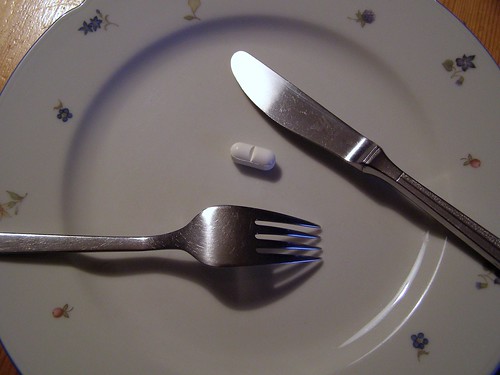 Part I of “Patient, Treat Thyself” addressed the role of self perception and self efficacy in a patient’s ability or desire to pursue self treatment. Some will call it non-compliance or non-adherence, but I would suggest that it is not just about a patient choosing to not carry out the treatment plan. It is oftentimes built into their self image and the self talk that winds its way through their day.
Part I of “Patient, Treat Thyself” addressed the role of self perception and self efficacy in a patient’s ability or desire to pursue self treatment. Some will call it non-compliance or non-adherence, but I would suggest that it is not just about a patient choosing to not carry out the treatment plan. It is oftentimes built into their self image and the self talk that winds its way through their day.
But there is another side to the coin, a significant problem faced in the clinic, the gym, and in the world around us. It’s name? The health care system itself.
Clinicians have spent many years building a health care system on a foundation of patient dependence. We have all heard the storylines. Don’t worry, just take this medicine, you will feel better. Don’t worry, this surgical procedure will solve the problem. There was a time when you had potions and elixirs that were given to patients that would solve everything including world hunger and peace in the Middle East. The first line of defense for many problems is not education, nor promoting self responsibility, nor even a cursory discussion of either of them. Medicine has done a great job over the past 50 years of creating a passive, dependent culture. You don’t need to do anything, don’t need to be responsible, because there is something that will make your problems go away. It is, as many call it, a “quick fix” culture.
This has become the accepted standard of care. Patient expectations are built upon it.
In the world of injury rehabilitation, we continue to see the use of passive modalities. The scientific literature is lacking yet clinicians continue to use them. Referral sources still request their utilization. However, a decision could be made to simply put our foot down and say “no, no more”. But the health care professions as a whole won’t say no. Passive modalities continue to be taught as yet another “tool in the toolbox”. The problem is perpetuated in graduating class after graduating class.
Clinicians are taught “hands-on treatment” and how it is “superior”. But the questions remains: does the patient then attribute their improvement (or lack thereof) to the “hands-on” procedure? If so, has that not fostered dependence on the clinician, even at a subconscious level? What happens if the patient has a recurrence of their problem?
The health care system also wasn’t designed around keeping people healthy. The incentives are exactly the opposite: it promotes economic stability if you do a mediocre job of dealing with illness. The heath care system promotes dependence. It promotes passivity and the clinician’s role as “fixer”. And we don’t give the patient any reason to believe that there is anything better than this. Sadly, this becomes the expectation, the accepted standard, for patients – whether it is in line with the scientific literature or not. They don’t comprehend a world in which many conditions and problems are effectively under their own control. Obesity? Do something. Mechanical back pain? Do something. THAT should be the expectation.
Imagine for a moment what would happen to expectations if patients were provided a continual stream of active options and were simply no longer given a passive option? What would happen if the patient wasn’t inundated by marketing and quick fix passive solutions? At the most elemental level, clinicians are ultimately patient advocates. Should we provide passive options just because a patient wants them?
We must advocate for the counterculture - patient-centered self care. We must find a way to promote the real tools to allow the patient to treat themselves, and it begins with the health care system itself. If not, the costs to our system of health – and our culture as a whole – will be far greater than we can imagine.
Photo credits: erix!
 "Running Injuries: Etiology And Recovery- Based Treatment" (co-author Bridget Clark, PT) appears in the third edition and fourth editions of "Clinical Orthopaedic Rehabilitation: A Team Approach" by Charles Giangarra, MD and Robert C. Manske, PT.
"Running Injuries: Etiology And Recovery- Based Treatment" (co-author Bridget Clark, PT) appears in the third edition and fourth editions of "Clinical Orthopaedic Rehabilitation: A Team Approach" by Charles Giangarra, MD and Robert C. Manske, PT.
 Allan Besselink, PT, DPT, Ph.D., Dip.MDT has a unique voice in the world of sports, education, and health care. Read more about Allan here.
Allan Besselink, PT, DPT, Ph.D., Dip.MDT has a unique voice in the world of sports, education, and health care. Read more about Allan here.
 Top 5 finalist in three categories: "Best Overall Blog", "Best PT Blog" and "Best Advocacy Blog".
Top 5 finalist in three categories: "Best Overall Blog", "Best PT Blog" and "Best Advocacy Blog".